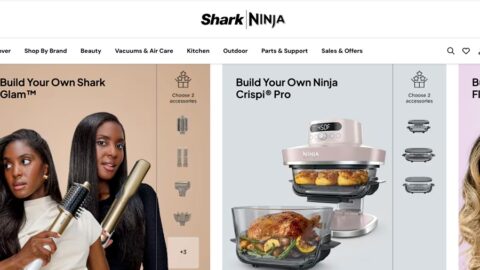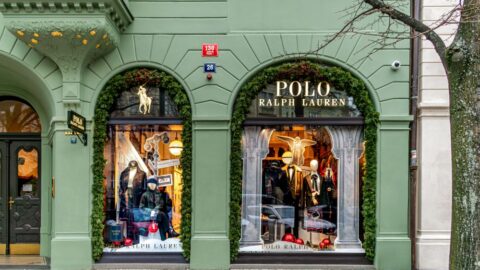Over five days and a growing portfolio of on- and off-site events, the National Retail Federation brought together more than 40,000 attendees and 1,000+ exhibitors in NYC. And after three years of pandemic aftershocks, industry experts confirmed what everyone in attendance felt (especially in their aching feet): the Big Show is officially back.
The positive vibe of the show was largely driven by retail executives’ obvious eagerness to explore which new technologies would help them maximize customer retention and business growth in 2024. In fact, Stephen Sadove, former CEO and Chairman of Saks Fifth Avenue, indicated that “this is one of the most interesting times [for the industry] since the [2008] recession,” where “we came out and saw this massive disruption in the environment,” he said in a press briefing during the Big Show. “It was the growth of what we first called multi-channel, which then became omnichannel, and then we saw the growth of the brands born on the internet.”
Sucharita Kodali, Forrester VP and Principal Analyst, agreed, but noted that the big question is whether the 40,000 attendees are “actually going to open their wallets and spend more on the technologies they need to differentiate themselves,” she said. “I’ve heard that we’re not seeing faster sales cycles, which means that [retailers] are eager to learn but not necessarily to make the changes that need to happen.”
It’s still too early in the year to answer this critical question, but there were some clear, overarching themes that emerged from Big Show sessions, booth campaigns and conversations, indicating that retailers may be investing in the innovation they need to win consumers’ hearts, minds and wallets. The top five themes include:
1. The Digitization of the Store
“Turning the store into a true digital channel is actually happening,” said Nicole Silberstein, Ecommerce Editor for Retail TouchPoints during an episode of Retail Remix. “I know we’ve been talking about bringing digital into the store for a long time, but now I’m seeing applications of technologies that are letting us assess what’s happening in the store and acting on it, in the same way we’ve been able to do on sites and apps for a long time.”
These data-driven, digitally connected store experiences are powered by various tools and technologies, such as computer vision, electronic shelf labels (ESLs) that push dynamic pricing into store aisles and interactive digital screens that amplify retail media network (RMN) advertising and influencer content.
Is the digitization of in-store experiences driving a context collapse for consumers? The Retail Remix NRF Recap explores how the Big Show is shaping the future of commerce.
2. Artificial Intelligence (AI)
It should come as no surprise that AI was the “golden child” of this year’s Big Show. While many vendors unveiled new AI and generative AI-powered solutions, retail executives spoke candidly about how their organizations are investing in the technology and integrating it into their workflows.
“Coming in, I felt this was going to be a proving point for AI. Is it the real deal? It clearly is. It [was] ubiquitous across the show and the sessions,” Silberstein said.
3. Brand Building
Sadove noted during the press briefing that the years following the recession were crucial for brand building. As digitally native businesses emerged and thrived online, they doubled down on creating relevant and engaging brands. And he believes we’ll see a similar focus in 2024.
Levi Strauss & Co. is one brand that has invested heavily in its brand to maintain relevance and impact. Michelle Gass, President of Levi Strauss & Co., who will be taking on the CEO title on Jan. 29, 2024, explained in a keynote session how central brand mission and vision is to the company’s longevity: “One of the key learnings during [the year-long CEO transition phase] has been about purpose and values, which is great because that’s how I’m wired,” Gass said. “I love the phrase at Levi’s: Driving profits through principles. It’s not about just serving the consumer but how you take care of employees on the front line, your social responsibility and responsibility to communities.”
4. ESG
Environmental, Social and Governance efforts have been a hot topic at the Big Show for a few years, but organizations are now beginning to share key learnings from their work and how they are measuring their progress. For example, PepsiCo Foods North America CEO Steven Williams shared how the company encourages every part of its value chain to stand “shoulder to shoulder” and align on sustainability goals and measures. The company also has forged a partnership with Walmart to make progress in regenerative agriculture and support local farms.
Amanda Efron, Chief Digital Officer of Ikea U.S., also discussed how transparency extends to customers within her organization: “I work for a mission-based company and we connect our content and experience to causes, and one of them is sustainability. [Our As-is resale offering] demonstrates our further commitment to circularity by bringing gently loved furniture back into our inventory. From the customer journey perspective it originates online, and it’s been surprisingly successful, because it anchors consumers in who we are as a mission-based company and allows us to elevate how people think about our brand.”
5. Business Fundamentals
Despite the excitement surrounding retail media, AI and other buzzy tech, there was an equal focus on building financially sound businesses. Many digitally native DTC brands were lauded for their “fail fast” attitudes, but executives from brands like Rothy’s preached the power of a more measured approach.
“Risk assessment is a muscle [that finance people have to develop],” said Dayna Quanbeck, CFO and COO for Rothy’s. “I’ve been through restructurings and Chapter 11s, and I both don’t recommend it [on a personal level] and do recommend it [as a learning experience]. I would say that as a CFO, I’m more risk-averse, but as COO or President, I want to make things happen, and [having both titles] helps me see both sides. Some things have sure returns attached to them, and sometimes you have to make a bet and go with your gut. If it doesn’t work the way you expect, you have to be agile, nimble and pivot.”













